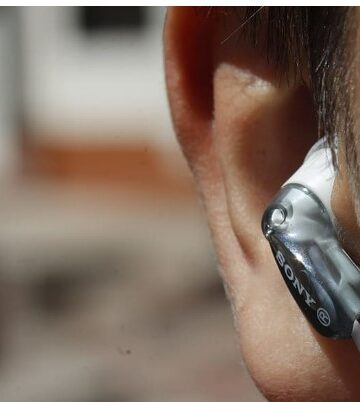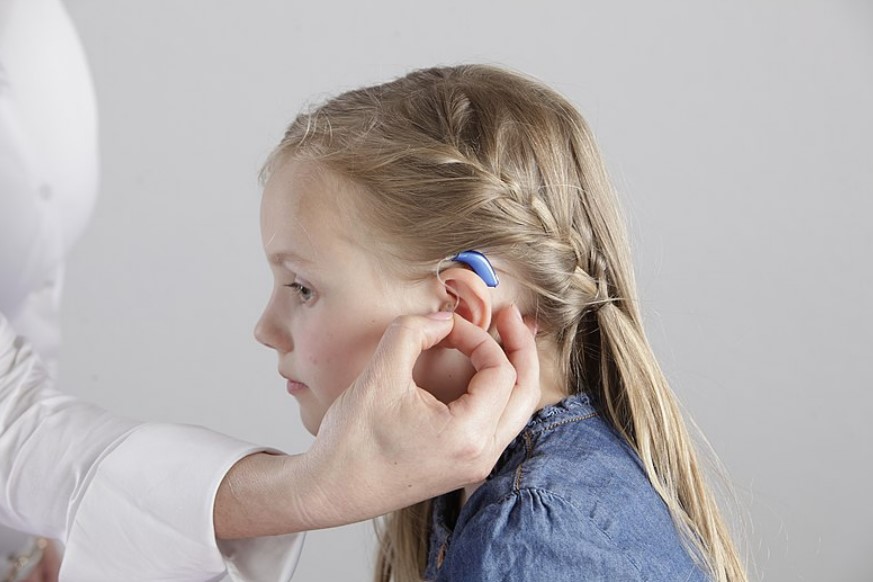Environmental noise pollution and loud music, these are two of the reasons why the number of 20-somethings who are wearing hearing aids has never been so high.
Juliann Zhou, a student at NYU, says she “probably listened to music too loud,” causing her hearing issues. That’s an increasingly common concern, according to the Hearing Loss Association, which has called noise-induced hearing loss a growing public health crisis.
By the time they turn 30, about a fifth of Americans today have had their hearing damaged by noise, the Centers for Disease Control and Prevention recently estimated. This number adds to the already substantial population of young people with hearing loss tied to genetics or medical conditions.
Though long-term tracking data is not available, the association estimates that 12.5 percent of Americans between the ages of 6 and 19 have hearing loss as a result of listening to loud music, particularly through earbuds at unsafe volumes.
For those who need them, the new wave of over-the-counter aids can be more affordable than many prescription models. That makes them a good first choice for more young people, said Zina Jawadi, 27, who has used hearing aids since she was 4 and attends medical school at the University of California, Los Angeles.
“This is one of the biggest things I’ve seen in a really long time in this space,” she said.
 The exact number of young adults who need or use hearing aids is difficult to pinpoint, but both device manufacturers and medical experts say that segment of the population is growing. The leading prescription aid manufacturer, Phonak, says the number of Americans between the ages of 22 and 54 who have been fitted with the company’s hearing aids increased by 14 percent more than the increase for users of all other ages between 2017 and 2021.
The exact number of young adults who need or use hearing aids is difficult to pinpoint, but both device manufacturers and medical experts say that segment of the population is growing. The leading prescription aid manufacturer, Phonak, says the number of Americans between the ages of 22 and 54 who have been fitted with the company’s hearing aids increased by 14 percent more than the increase for users of all other ages between 2017 and 2021.
Experts say that in addition to the increasing numbers who are suffering from hearing loss, there is also a change in attitude, thanks to advances in technology, leading more young people to be willing to give them a try.
Grandma’s hearing aids were never like this: Bluetooth-enabled and connected to the phone, they allow you to toggle with one touch between custom settings. You can shut out the world during a screeching subway ride, hear your friends in noisy bars during a night out and even understand mumblers simply by switching settings.
But there are still significant barriers: Hearing aids are expensive — especially for people who lack good medical insurance — with most costing $1,000 or more. And the options can be confusing and difficult to navigate; many models still have to be prescribed by an audiologist. And while the stigma might be fading, it has not entirely vanished.
Data collected in 1989 by MarkeTrak, a consumer research organization that is part of the Hearing Industries of America, suggested that people who wore hearing aids “were perceived to be less competent, less attractive, less youthful and more disabled.” Today, though, the organization said in a recent report, hearing aid users “rarely or never feel embarrassed or rejected.”
There are dozens of brands to choose from, ranging from small, in-ear pods to those that use long metallic arcs around the ear. Most new models have Bluetooth streaming capacities. And some of the over-the-counter options can even be ordered online with free shipping. Hearing aids have come a long way.












